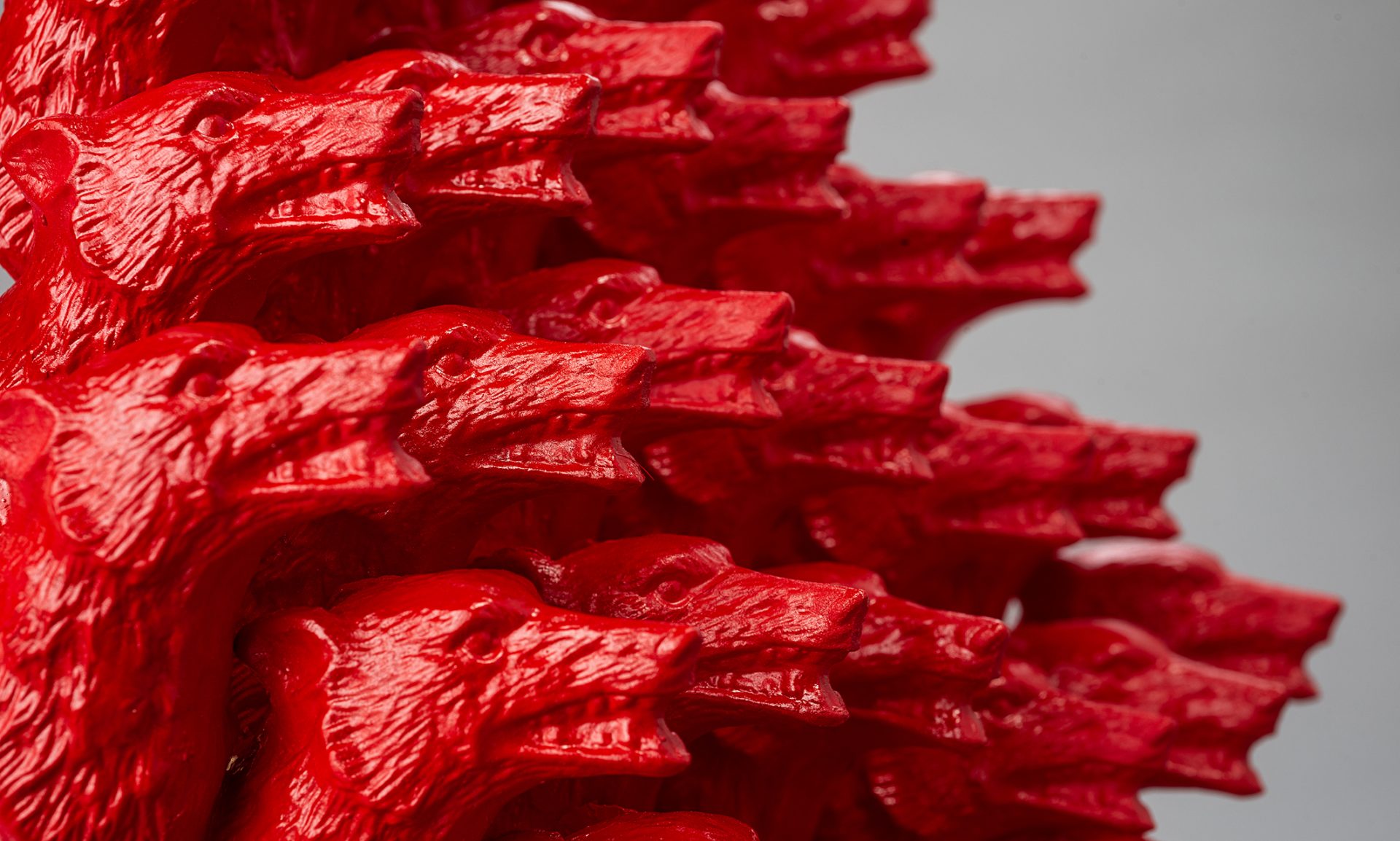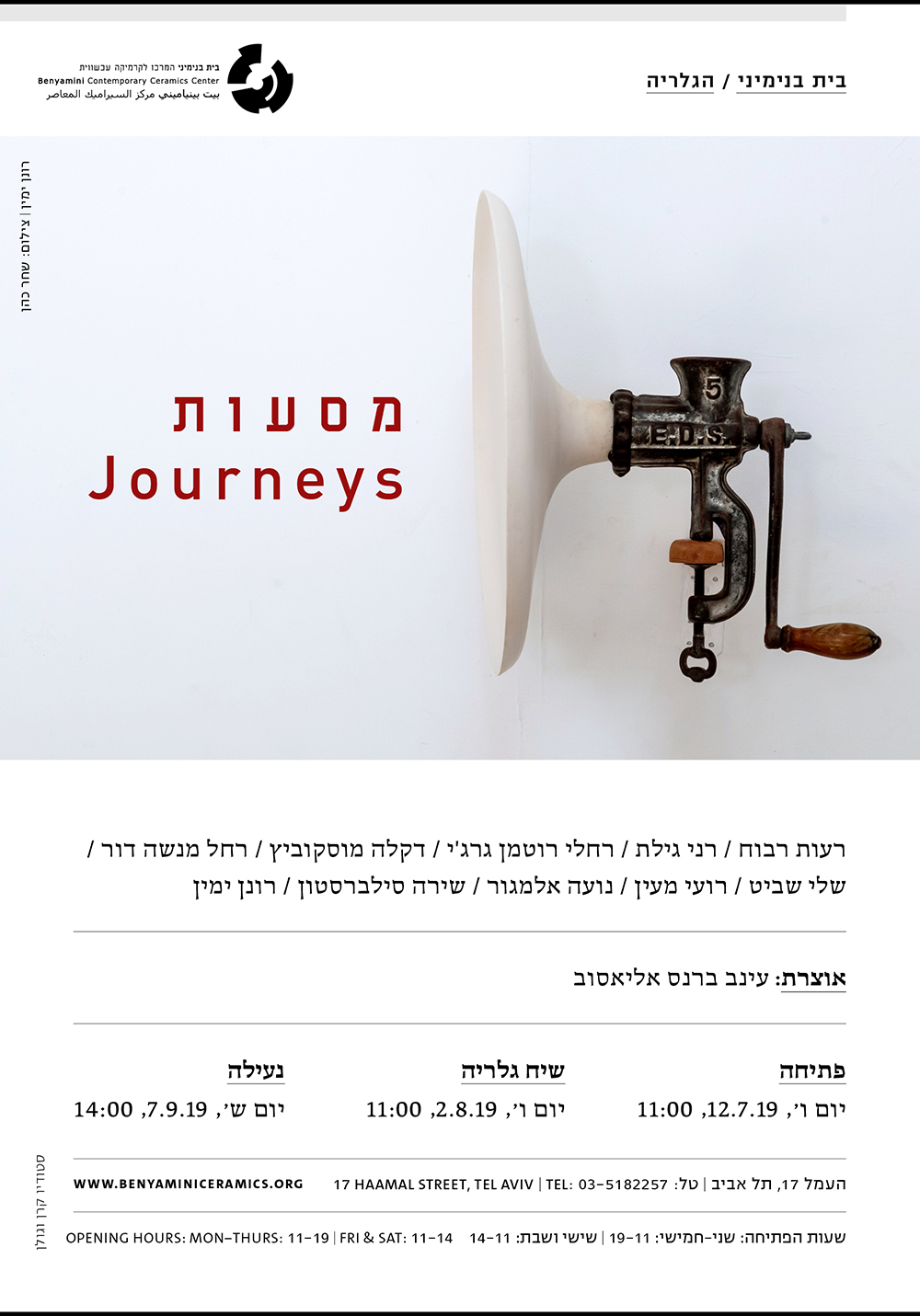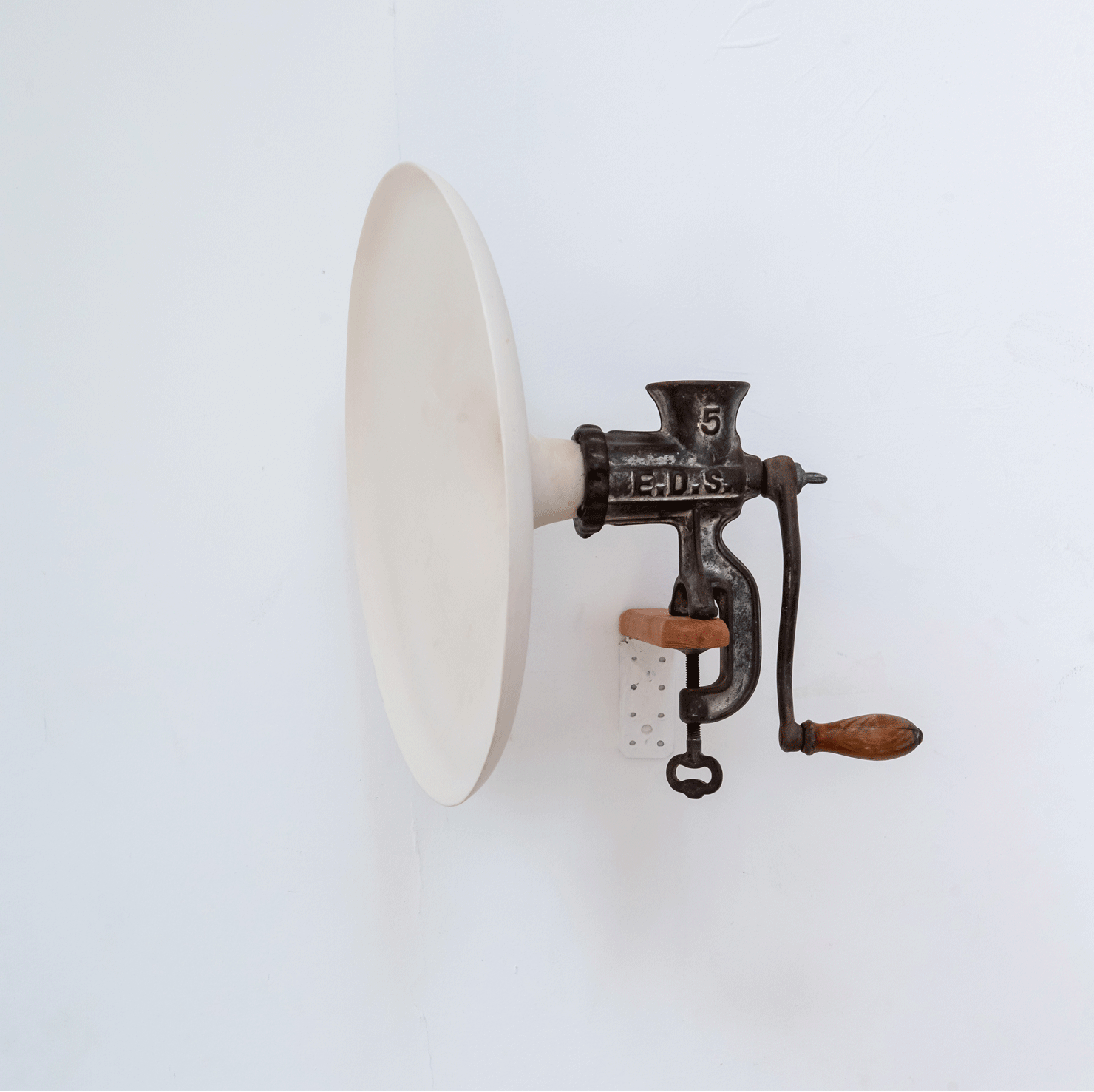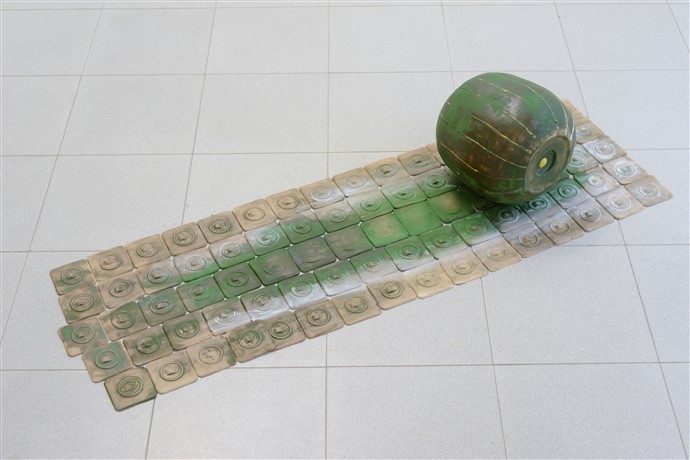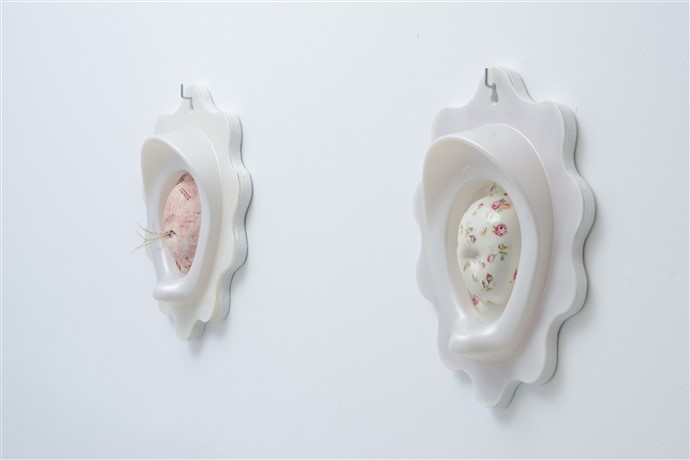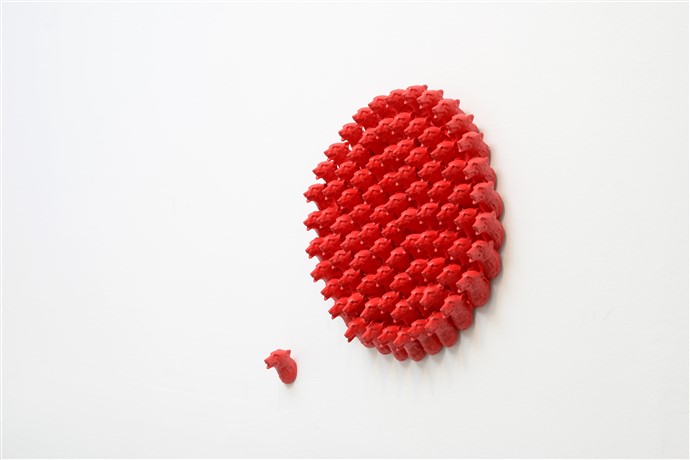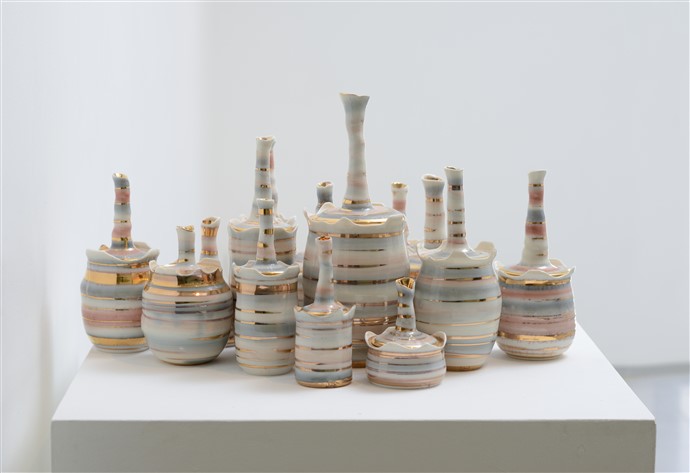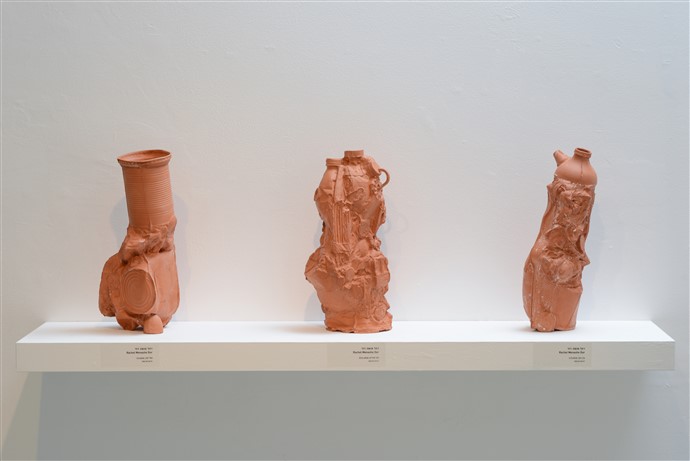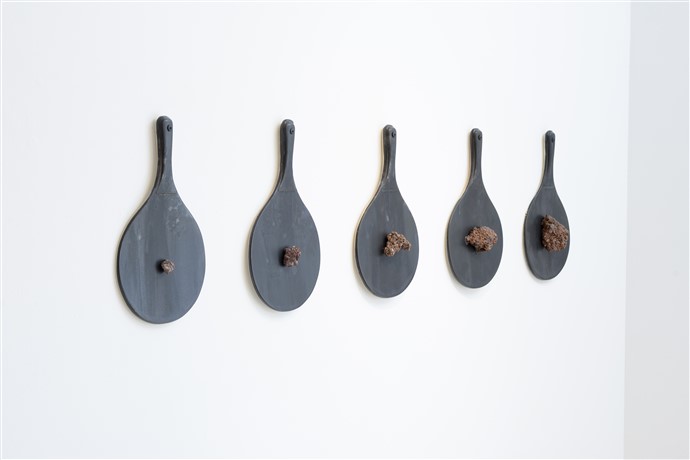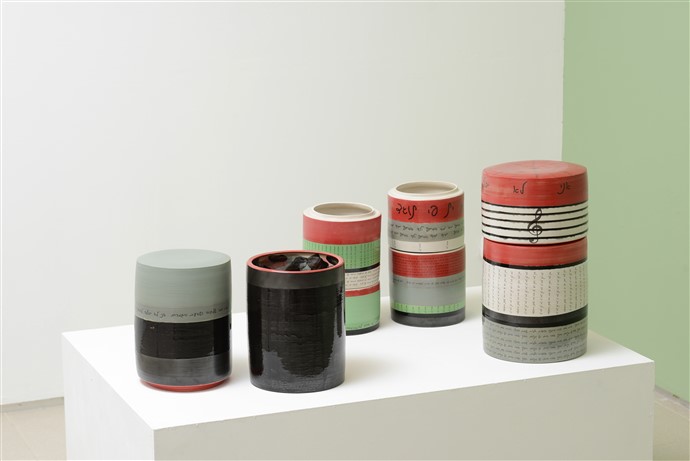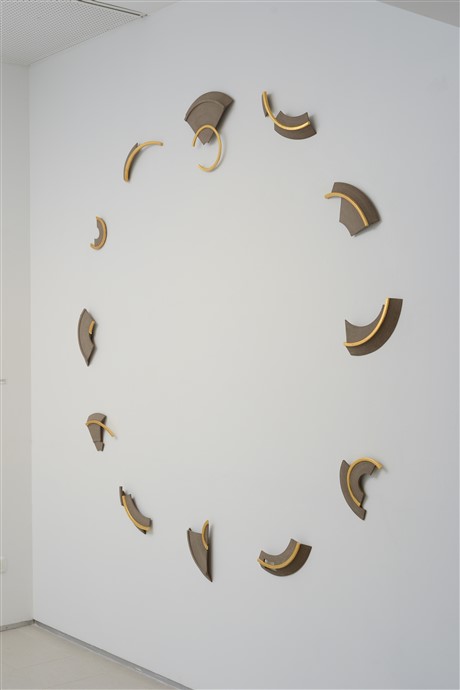Artists: Racheli Rothman Garji, Rani Gilat, Ronen Yamin, Roy Maayan, Reut Rabuah, Rachel, Menashe Dor, Noa Almagor, Dikla Moskovitz, Shelly Shavit, Shira Silverston
Curator: Einav Baranes Eliasov
Opening: Friday 12/7/2019 at 11:00
Gallery talk: Friday 2/8/2019 at 11:00
Closing: Saturday , 7/9/2019 at 14:00
Departing on a journey enriches ones spiritual and material world. On these journeys we encounter different cultures and communities, traditions and lifestyles – from which we learn, sometimes changing a bit, and then continue. In our time we are exposed to the “big world” with all its layers at every moment experiencing cultures, information, ideas and images that appear on our journey.
This exhibition is an attempt to expand the term “journeys” and examine the concept not only in concrete terms but as a starting point for a personal journey, roots, materials and any journey one undertakes in one’s life.
The video by Rachel Rothman Garji is part of a series of video works in which she examines the relationship between material and “anti-material” of the flat photograph. The photograph enables the creation of a world where the image takes on a form endlessly, independent of the fired object, beyond the boundaries of the material. Her work “observance” exposes the making process. The creation of the form and the journey to that fleeting moment of synergy between the maker, the material, the form and the essence. It is a moment of magic which happens and disappears until the next journey.
In the childhood home of Ronen Yamin the hand mincer was used daily – mincing everything…. meat, fish, peppers, and of course extruding dough to make bagels. For Yamin, the repetitive rotation of the handle and the extrusion of the food from the opening appeared magical as if the handle turned by his mother were the cogs of time in the hand of Rumpelstiltskin transforming objects. As an adult Ronen became a potter and the connection between body and vessel continued to interest him in his creative process. Working daily as a potter with the revolving wheel became his existential identity. The excitement of transforming a lump of clay into an object remains magical as in his childhood.
Rani Gilat, in his work Tribe goes back in time and looks at the place of community in relationship to the individual. He examines the interpersonal dynamics in traditional tribes that survives as a group while taking care of each other, modern urban communities that with time developed the concept of the individual and how community institutions and the new family have transformed over the years developing many varieties of communities, families and individuals living side by side. He is interested in the new family and the long and tiresome route it has taken to be accepted in society. Despite the huge changes that have occurred in the position of the tribe/community in our lives, he views support and interpersonal dynamics as critical for development and the chance to survive physically and mentally.
Roy Maayan explores the land and the world searching for materials. This is an intensive, obsessive way of life and the journey of research and creativity is to make connections between form, texture, material of a place and that of Maayan. His work “collecting tuff” shows a series of beach bats representing “Israeli”. The bats have been transformed from wood to clay and are marked with the earth of Israel, tuff, collected in the Jerusalem hills and the Galilee. The hybridization removes the functionality and raises questions about the distance between being Israeli and local.
Rachel Menashe Dor lives in the north of the country and is connected to nature through every vein in her body. When hiking the paths and rivers of Israel she encounters the garbage and objects left by other hikers or by floods. Menashe Dor collects these “treasures” and sorts them into boxes in her studio noting where they were found and when. These finds are put together as a conglomerate, as a new body with old DNA. With these remains that she finds Menashe Dor creates new vessels that can be used in the hope to transform the pile of plastic into clay that even if it breaks will blend back into nature.
Reut Ravuah creates heads of wolves examining the image of the wolf living in a pack, growing up and leaving to create a new pack. For several years Ravuah travels between Tel Aviv and Beer Sheva, each destination giving and taking something in her life. The perpetual movement between the two towns, between the house and the studio, being alone or together draws her to examine the field of her life, en route. IN her work, Wolves, Ravuah presents a series of heads without bodies, focusing on the powerful expression and drawing a parallel between beauty and rejection, fear and attraction, and raising questions of belonging in various circles in her life; family, art and being single. For her the wolf is a source of strength, a survivor, in his territy and desolate areas.
A mother of a child and not a child of a mother, motherless mother. Noa Almagor searches for the rhythm, the one she knew is lost and the new one is not totally familiar. In her work “A container contains a container” ALmagor presents a series of vessels, a kind of family bearing memories and yearning, motherly mantras and longing for unconditional acceptance. Almagor examines the inherent traits she bears from what was instilled in her and its expression in her life as an adult, a mother to children continually examining the loss of her mother as opposed to her motherhood raising her young family.
Shelly Shavit examines the borders of touch, following human movement that is in perpetual tension between the organic and the industrial. She focuses on the distance between the touch of a body, the rolling living pupa, that crushes and leaves a mark of movement and the contact of daily touch, industrial, endless on the on/off switch – where no trace is left. In the work Touch On/Off the plastic becomes clay and the rolling pupa leaves marks in its path.
Dikla Moskovitz makes functional vessels and jewelry. In her work, ‘cycle of life’, she looks at the material journey she makes when creating. She looks at the traditional boundaries, makes them and breaks them, deconstructing and reconstructing with a new rhythm and identity. The new fragments are transformed and assembled to create large sculptural pieces with a new meaning.
3 tummies, 3 navels, 3 stories. A series of wall objects made by Shira Silverston relate to the aging of the female body, the marks of time, birth and motherhood that have left their imprint. Silverston makes the tummies from “noble” porcelain, with traditional decorations to beautify but the plastic frame which is usually a toilet seat for toddlers makes the object absurd. This is a journey of maturation facing reality through the navel.
In summary the Swiss- French writer, Nicolas Bouvier wrote: The experience of the journey leads us out of the familiar. It appears that you embark on a journey, but the journey is inwards.”

